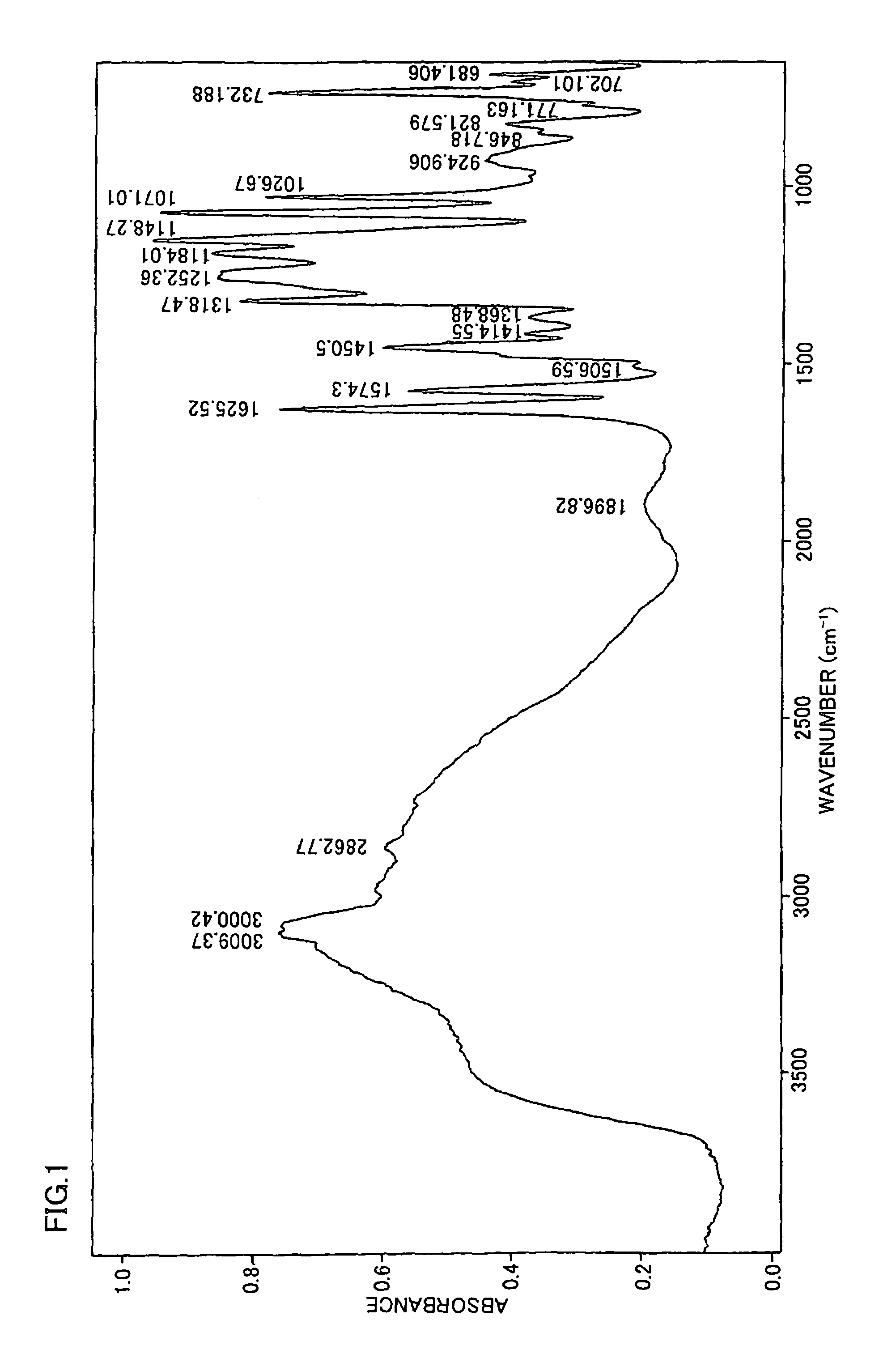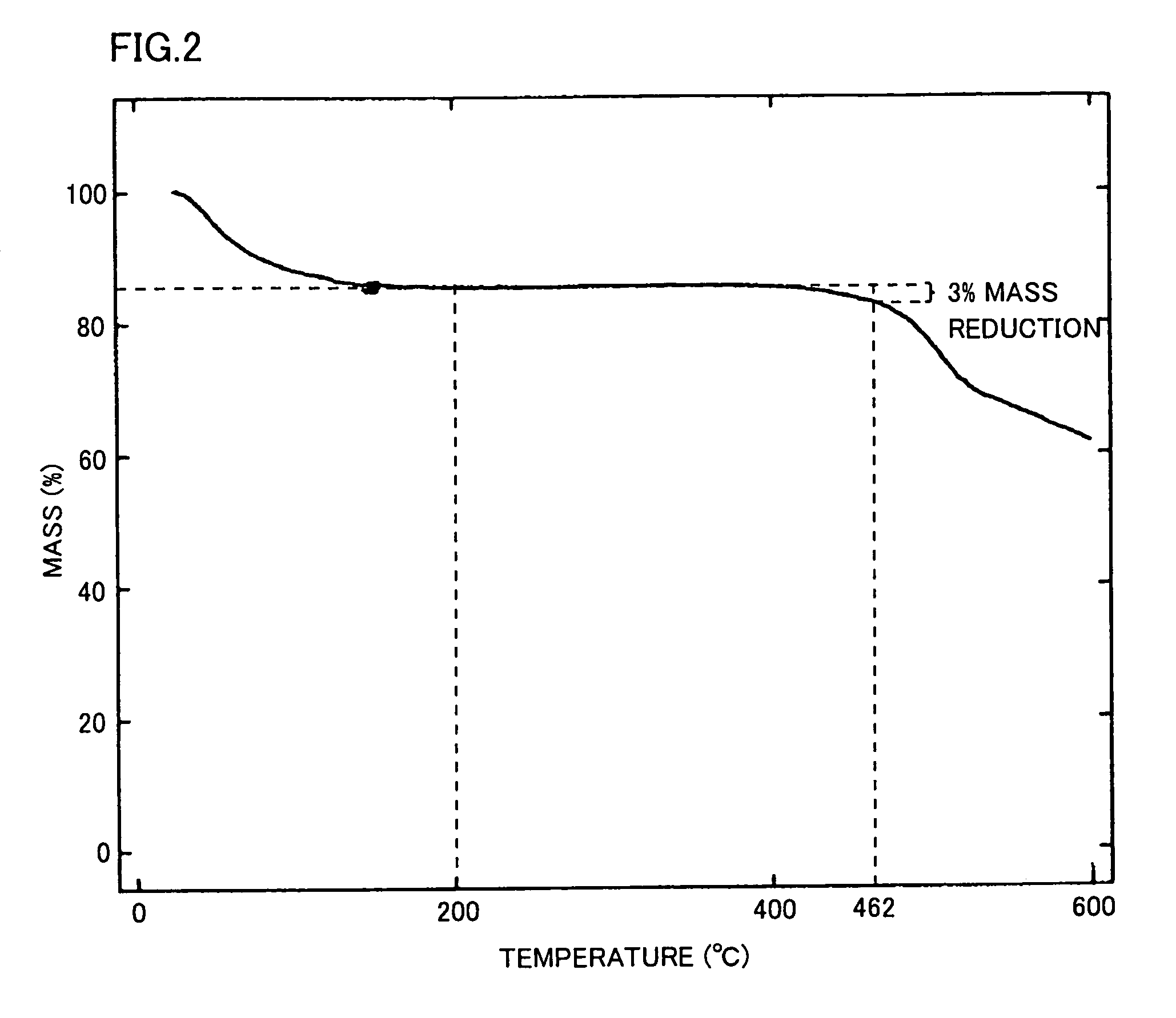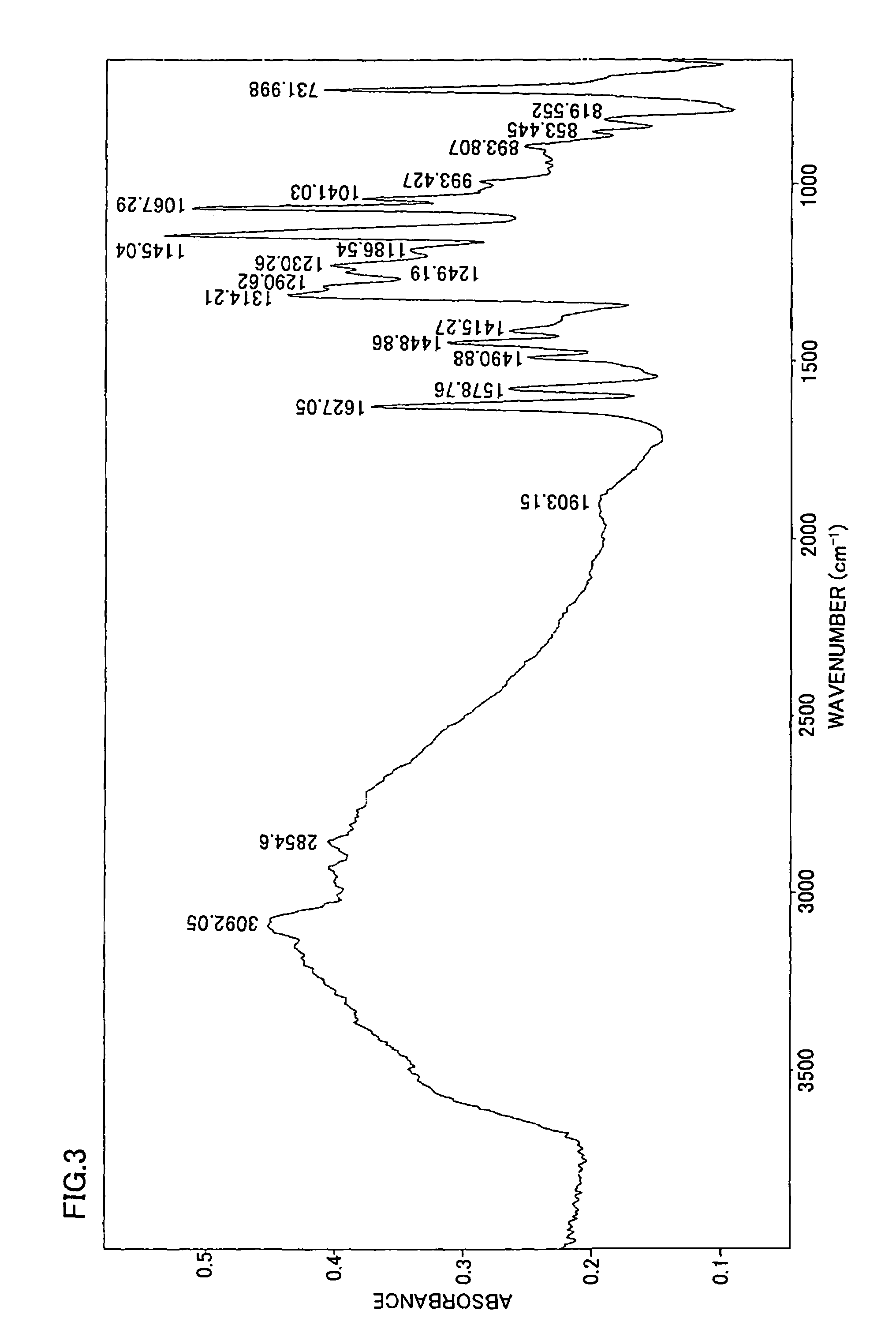Polybenzazole compound having sulfonic acid group and/or phosphonic acid group, resin composition containing the same, resin molding, solid polymer electrolyte membrane, solid polymer electrolyte membrane/electrode assembly and method of preparing assembly
a technology of phosphonic acid and polybenzazole, which is applied in the direction of electrical equipment, conductive materials, chemical/physical processes, etc., can solve the problems of fuel cell not being able to achieve the theoretical efficiency of an actual fuel cell, the fuel cell cannot completely convert the thermal energy obtained in combustion, and the fuel cell cannot exhibit sufficient performance, etc., to achieve excellent heat resistance, solvent resistance and durability/stability, excellent properties in heat resistance, solvent resistance and mechanical characteristics
- Summary
- Abstract
- Description
- Claims
- Application Information
AI Technical Summary
Benefits of technology
Problems solved by technology
Method used
Image
Examples
example 1
[0281]First, 1.500 g (5.389×10−3 mol) of 3,3′,4,4′-tetraminodiphenylsulfone, 1.445 g (5.389×10−3 mol) of 2,5-dicarboxybenzenesulfonic acid monosodium salt (abbreviation: STA, purity: 99%), 20.48 g (0.1082 mol as phosphorus pentoxide) of polyphosphoric acid (phosphorus pentoxide content: 75 mass %) and 16.41 g (0.1156 mol) of phosphorus pentoxide were charged in a polymerization vessel.
[0282]Then, nitrogen was fed into the polymerization vessel, and the reaction mixture were slowly stirred on an oil bath and heated to 100° C. Then, the materials were held at 100° C. for 1 hour, thereafter heated to 150° C. and polymerized for 1 hour, and heated to 200° C. and polymerized for 4 hours. After completing the polymerization, the mixture was allowed to cool, poured into water, and the polymer obtained was repeatedly rinsed in a blender until pH test paper was neutralized. The polymer obtained was vacuum-dried at 80° C. overnight.
[0283]The resulting polymer exhibited inherent viscosity of 1...
example 2
[0289]A polymer was prepared by polymerization similarly to Example 1 except that STA and terephthalic acid (abbreviation: TPA) were employed in place of STA with varying the mixing ratio for attaining 5.389×10−3 mol in total, for preparing a membrane and performing various measurement tests and various evaluation tests.
[0290]As a result of the various measurements, ion conductivity kept stable performance over a long period in every sample, and the shape of the membrane was also excellently maintained. Also, even if a thin membrane of about 10 μm in thickness was prepared, the membrane was not broken in the aforementioned various evaluation tests. Table 2 shows results of the various measurements.
[0291]
TABLE 2MembranePolymer PerformancePerformancePolymer Inherent3% MassIonHot CompositionViscos-Dura-ReductionConduc-Water(molar ratio)ity*1bilityTemperaturetivityResis-TPASTA(dl / g)(dl / g)*2(° C.)[S / cm]tance*334661.331.294780.015no change66341.421.424850.002no change*1inherent viscosity ...
example 3
[0292]A polymer was prepared by polymerization similarly to Example 1 except that 3,5-dicarboxybenzenesulfonic monosodium (abbreviation: SIA, purity: 98%) was employed in place of STA, for preparing a membrane and performing various measurements and various evaluations.
[0293]FIG. 3 shows the IR spectrum of the obtained polymer measured when adjusting the charging ratio to TPA / SIA=66 / 34. It is understood from the result of the IR spectrum shown in FIG. 3 that this is polybenzimidazole containing sulfonic acid groups according to the present invention.
[0294]As a result of the various measurements, ion conductivity kept stable performance over a long period in every sample, and the shape of the membrane was also excellently maintained. Also, when a thin membrane of about 10 μm in thickness was prepared, the membrane was not broken in the aforementioned various evaluations. Table 3 shows results of the various measurements.
[0295]
TABLE 3MembranePolymer PerformancePerformancePolymer Inher...
PUM
| Property | Measurement | Unit |
|---|---|---|
| conductivity | aaaaa | aaaaa |
| RH | aaaaa | aaaaa |
| conductivity | aaaaa | aaaaa |
Abstract
Description
Claims
Application Information
 Login to View More
Login to View More - R&D
- Intellectual Property
- Life Sciences
- Materials
- Tech Scout
- Unparalleled Data Quality
- Higher Quality Content
- 60% Fewer Hallucinations
Browse by: Latest US Patents, China's latest patents, Technical Efficacy Thesaurus, Application Domain, Technology Topic, Popular Technical Reports.
© 2025 PatSnap. All rights reserved.Legal|Privacy policy|Modern Slavery Act Transparency Statement|Sitemap|About US| Contact US: help@patsnap.com



